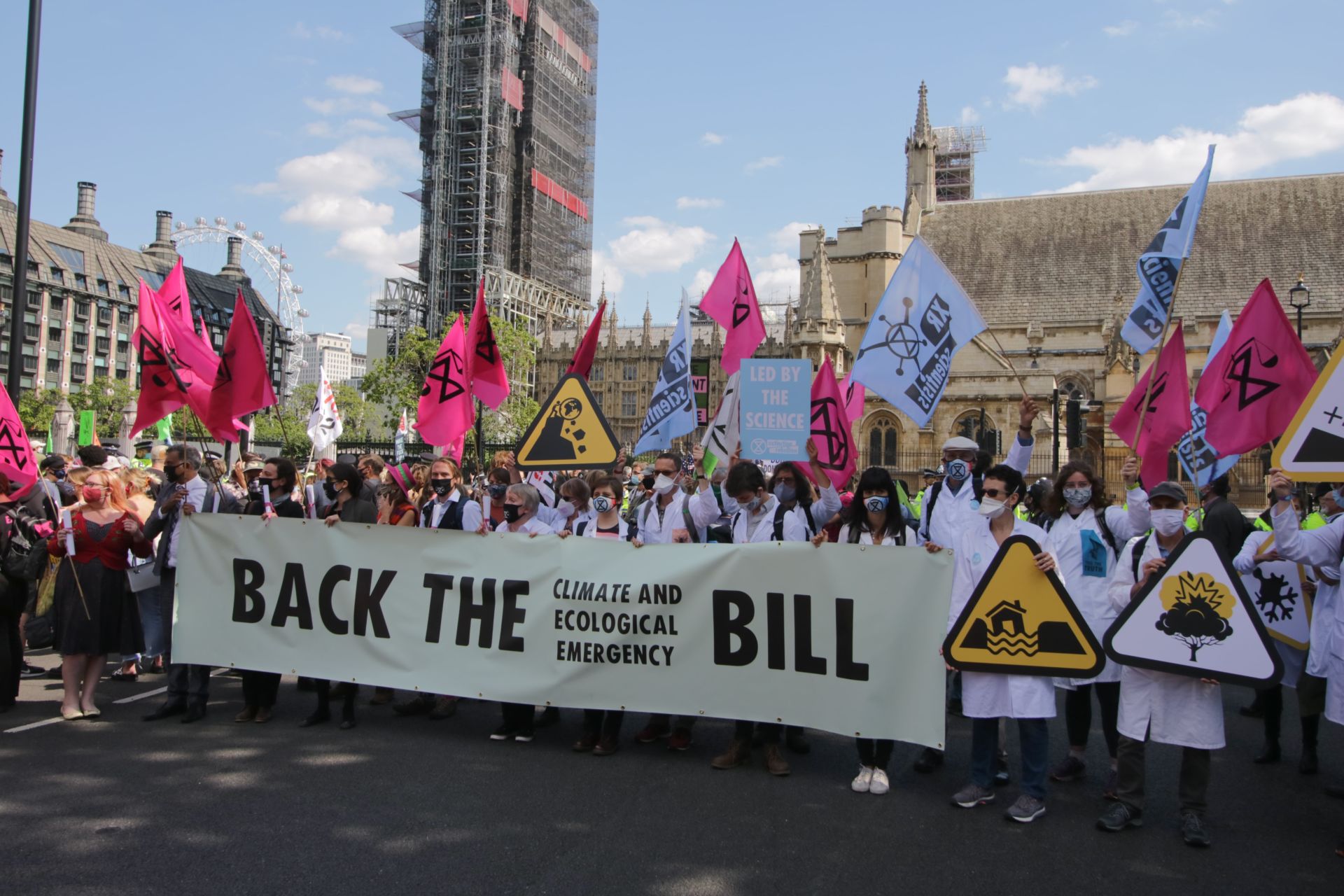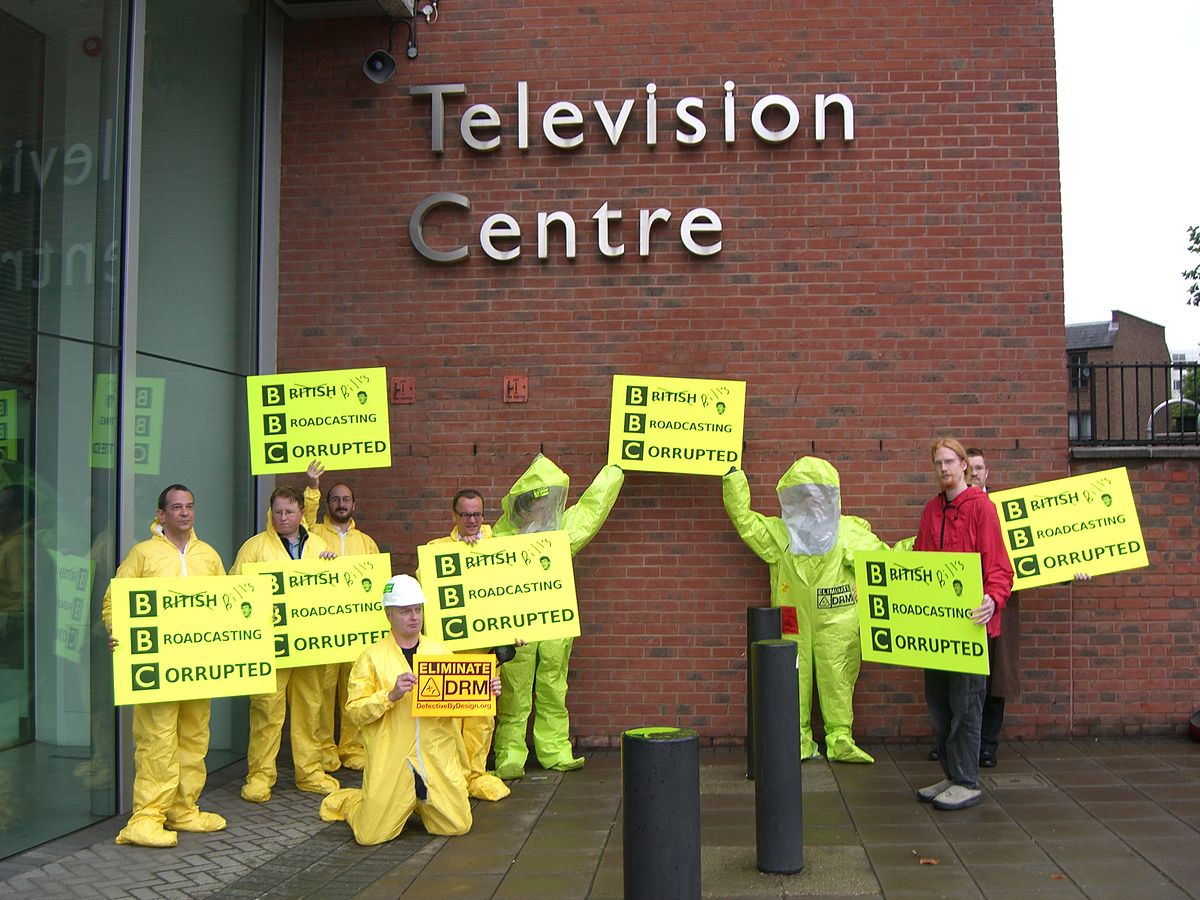Extinction Rebellion (XR) has officially had its first round of organized protests since the “Autumn Uprising” in 2019 brought large parts of commuting London to a standstill. The latest protests kicked off on Tuesday September 1 with nearly two weeks of activity planned to follow.
The majority of the protests were set to take place around Parliament in London with localized XR groups also holding protests in Manchester and Cardiff.
This was a shift in approach from XR’s previous protests as they stated their priority this time around was to cause disruption only for the key organizations they believe are to blame for the climate crisis in a bid to minimize wider disruption to regular members of the public in London.
XR’s messaging with this new wave of protests centered around holding the U.K. Government to account, using the tagline #WeWantToLive. Its end goal was to carry out “pressure building actions” until the government backs the Climate and Ecological Emergency Bill (CEE) and greenlights a National Citizens’ Assembly to prepare for the crisis.
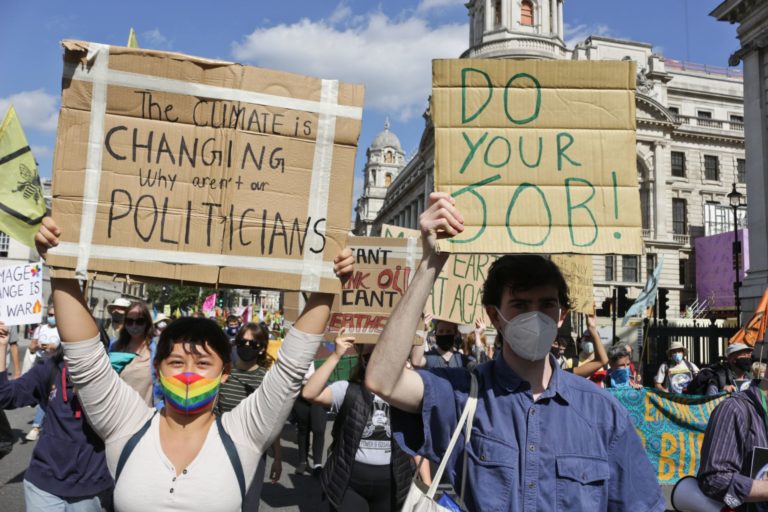
The hope is for the U.K. government to take a stronger stance on the issue of climate change ahead of the next international climate negotiations, the 2021 United Nations Climate Change Conference (COP 26) which the U.K. will be co-hosting.
Because of this, protests in and around Parliament Square saw an influx of protesters on the second day of action for Prime Minister Boris Johnson’s arrival for PMQs. The same day the bill was tabled in Parliament by Green MP Caroline Lucas. A staged Citizens Assembly also took place on Sunday September 6 in a bid to bring, “a sense of what a Citizens’ Assembly sounds and feels like to Trafalgar Square.”
Related Articles: Scenes From a Rebellion | Climate Crisis: Why Should We Panic Now | How to Organize for Political Success
Over the past week, the protests have also directed attention towards a number of other prevalent threats to climate change. This included a Marine Extinction March in collaboration with Ocean Rebellion, Animal Rebellion and Sea Life Extinction, and a protest against the HS2 high-speed rail project.
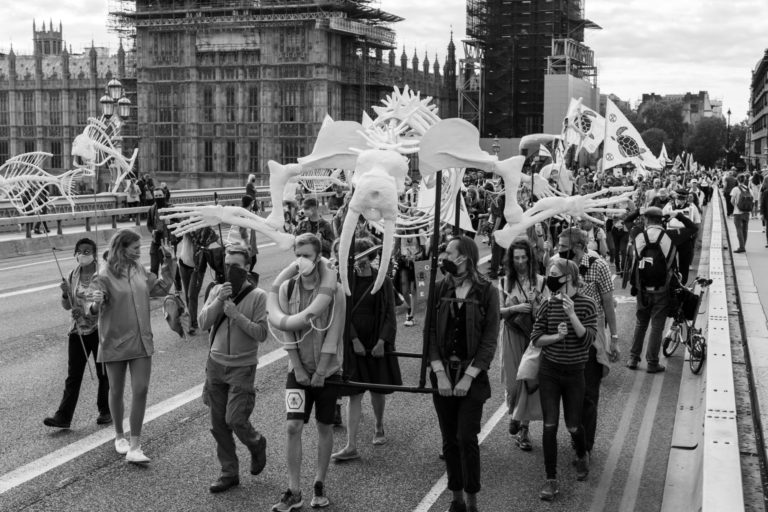
But the various protests have been met with a harsher response than usual from the Metropolitan police. The force preemptively imposed conditions on where demonstrations could take place under Section 14 before protests had even begun and over the weekend they were actively dispersed.
Police also seized the Lightship Greta, a 20ft model boat named after teenage activist Greta Thunberg, in Kennington, south London after the boat, bearing the words “Sound the alarm – Climate Emergency,” had been marched on foot from Brighton. In total 680 arrests were made in London alone within the space of ten days. The oldest arrested protester this time around was 92 years old.
The notably harder line the police have taken in comparison to previous protests has caused concern for civil liberty experts. The civil liberties group Liberty has warned that peaceful protest is under threat in the U.K. due to police tactics of pre-emptive arrest and “unworkable” restrictions. Gracie Bradley, the group’s interim director, called the police tactics “heavy-handed” and warned that a legitimate protest was trying to be reframed as a public nuisance.
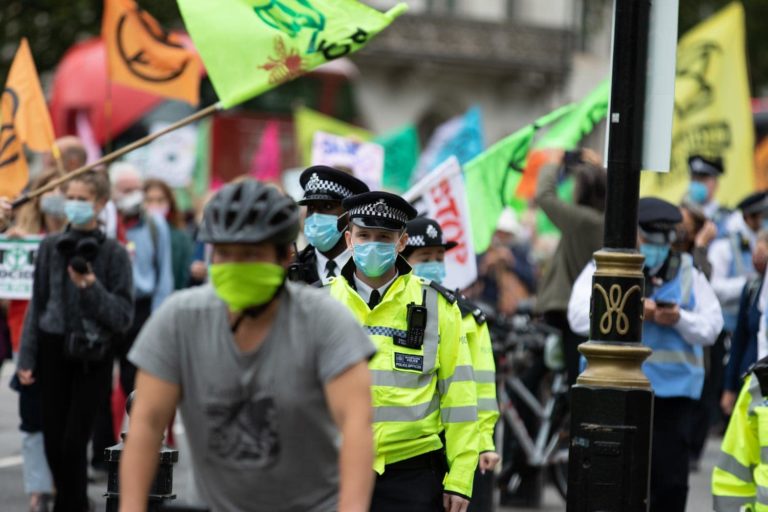
The protest was the first mass gathering of its kind since an XR rebellion planned for earlier this year was canceled due to the pandemic. Many of the protesters were seen taking the necessary precautions and wearing face coverings whilst attending. But those organizing the protests could still face a £10,000 fine for the gathering under current coronavirus legislation.
But XR has argued that the current pandemic made these protests even more crucial. As many global crises intersect including the climate emergency, the Covid-19 pandemic and racial injustice, the government and corporate actions can no longer continue as “business as usual.”
All are symptoms of a toxic system that is driving us to extinction – a system built on economic inequality, extraction, the destruction of nature, and exploitation. We cannot carry on like this. The system is killing us.
One NHS doctor, Chris Newman, a GP in north London, gave his reason for attending the protests despite the Coronavirus risks, saying, “even in the middle of a pandemic, we are more concerned about climate change than the pandemic. We’ve seen how bad this is, but we’re even more worried about climate change.”
The concern would be that there is always a short-term problem and when you are dealing with a huge long-term issue that is getting ever closer – then when do you tackle it?
However, navigating the health considerations of COVID-19 for protesters has also led to creative alternatives such as the “digital rebellion” taking place online for those unable to attend the demonstrations in person.

Numbers demonstrating on the streets have undoubtedly been lower than in previous protests, but the movement hoped to make up for this with more hyper-specific targeting in their actions.
This has sparked nationwide discourse over some of XR’s controversial approaches. In particular, XR protesters received a large backlash of criticism after blocking the entrance to three U.K. national printing presses owned by Rupert Murdoch, leading to major delays in distribution for many newspaper titles.
The blockade erected by protesters displayed banners such as “Free The Truth” and “5 Crooks Control Our News.” Taking aim at the select few billionaires owning much of the right-wing press. The action hoped to bring into question the unethical monopoly of those at the top in deciding the news agenda and downplaying the climate crisis. But what followed in much of the news coverage was a divisive debate repositioning XR’s action as an attempt to stifle free press.
The situation quickly escalated, with conversations of classifying the group as “organised crime” banded around in Parliament. U.K. Home Secretary Priti Patel made the government’s position on the matter clear, condemning it as, “an attack on our free press, society and democracy.”
Since then, 77 charges have been made and many of the protesters involved have found themselves singled out by the right-wing media.
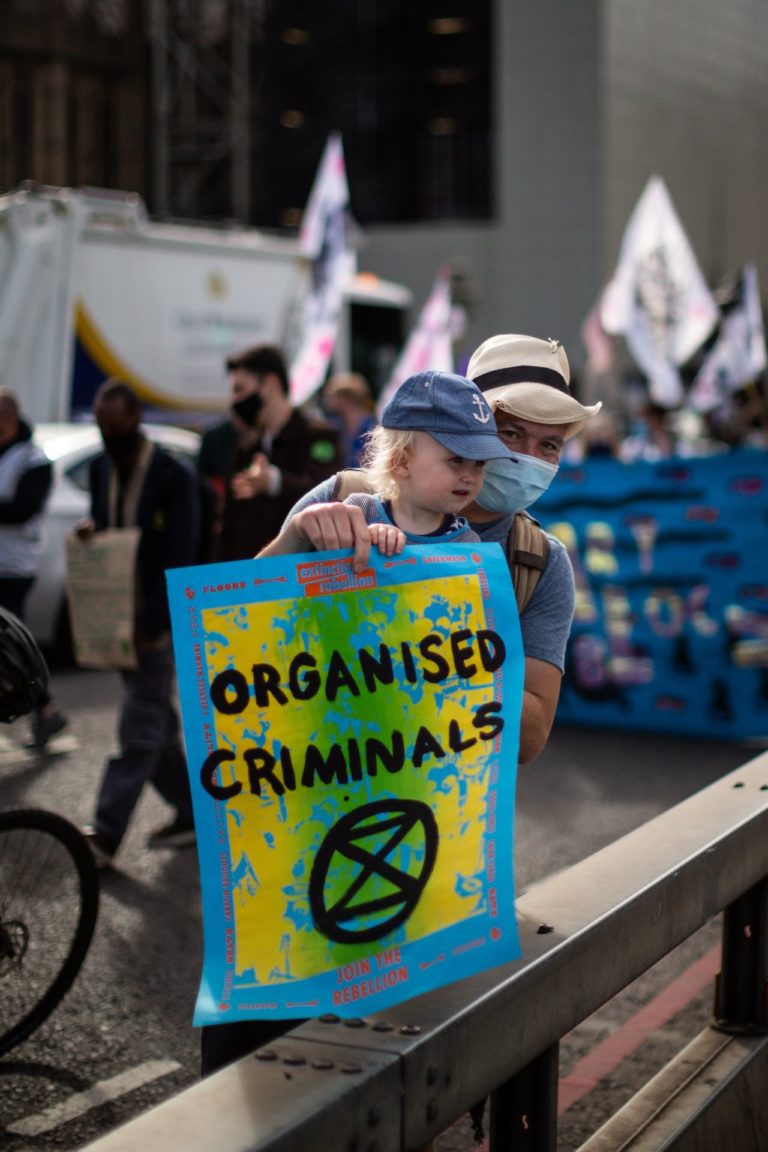
This latest round of protests has shown that police response and news coverage on environmental protests have become further polarised within the past year. But since the officially organized action was brought to a close on Thursday, September 10, the question remains of whether the group has managed to achieve what it set out to do.
It certainly pushed the topic of climate change higher up the mainstream news agenda over the past weeks. However, it is too early to tell whether it has successfully brought enough attention to the tangible actions that need to be taken to combat the climate emergency, such as backing the CEE bill.
Now that the CEE bill has been tabled it needs to get enough MPs to support it before it can be discussed. As a Private Members’ Bill (PMB) it will then need to pass through both Houses of Parliament with a majority vote in favour before coming into law.
Currently, it has received backing from over 60 MPs from across six political parties. The Early Day Motion (EDM) calling formally for the bill to be debated at the earliest time possible has already been signed by 56 MPs.
Unfortunately, the timeline for the parliamentary process of a PMB appears open-ended. There is a lack of clear guidance on exactly how much support is needed before the bill can move forward to be debated and there is no set threshold of signatures the EDM can reach to guarantee it is successful.
However, the more support the EDM receives, the better its chances of success, the best chance being if the Leader of the Opposition sets it down. The most direct action you can take to maintain the pressure for more MPs to back the bill is to contact your local MP.
Editor’s Note: The opinions expressed here by Impakter.com columnists are their own, not those of Impakter.com. — In the Featured Photo: Extinction Rebellion protesters holding a banner that says, “Back the Climate and Ecological Emergency Bill.” Featured Photo Credit: Steve Eason / Flickr


